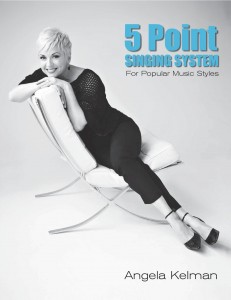 Quote Of The Day
Quote Of The Day
“Happy Birthday… Mr. President… Happy Birthday… to you”
Marilyn Monroe
Who can ever forget the airy, kittenish performance Marilyn Monroe gave while singing “Happy Birthday” to President Kennedy in 1962. It has forever been stamped in our memories as one of the defining images of 1960’s political and pop cultures. I ask the question, “would it have become so popular if her voice had sounded like a bleeting sheep being taken into the sheering shed? (LOL – ooh that makes me wince). The point I am trying to make here is that everyone’s voice has certain characteristics: someone may sing with pure tone and very little air, someone else may have a very airy sounding texture, like Marilyn or another’s voice may be a lovely balance of the two. What we need to learn as singers is how to identify what kind of voice texture we have naturally and learn how to manipulate it to compliment the song we have chosen to sing. For example, if a song is soft and gentle like a lullaby, (or “Happy Birthday Mr. President”), the last thing you want to do is sing it like a country singer who is all tone, nasally sounding with no hint of airiness– you’d scare the poor kid (or President) half to death. So exactly how do you take the edge off a more pointed, harsher sounding voice. It is quite a simple thing to do once you are aware of it and that is to “pad” the tone of your voice with some air around it by balancing what I like to call, “air to tone ratio”.
So, how do we control the air to tone ratio? Air to tone ratio is controlled by your diaphragm support which is POINT 2 in the 5 Point Singing System. If you want to expel more air around your tone, pull your diaphragm in towards your backbone faster then you would to sing pure tone as it will force more air out. Of course, this means that you will have to breathe more often and take in more air because you are using it up faster when creating this pad of air around your tone. Conversely, if you want to have more tone and less air, pull your diaphragm towards your backbone with hardly any force and you will stay “toney” and not sound “airy”.
Learning to control your air to tone ratio gives you a lot of options when performing a song or singing with others. Achieving a good blend with other singers is often the result of adding more air to your tone. It is also a tool used to make your performance the best it can be by choosing complimentary tones for the song you will be singing or being able to soften with air for emotional effect.
Experiment with your own voice by adding air or taking it away. This enlightenment will give you a lot of new options to use when performing or recording.
Until Next Time… Breathe and Happy Singing!
Angela
www.5pointsingingsystem.com
www.angelakelman.com
— Delivered by Feed43 service


